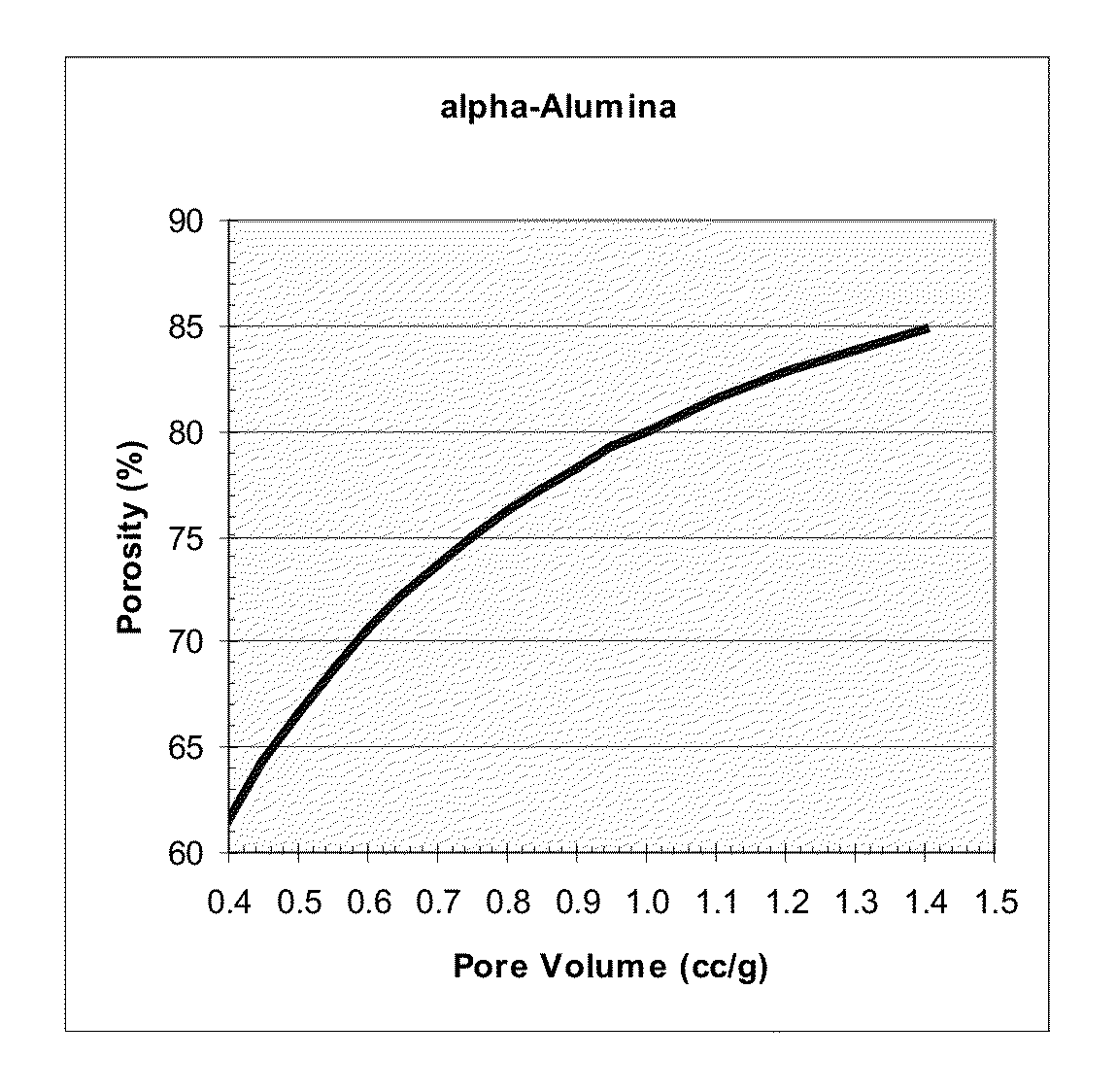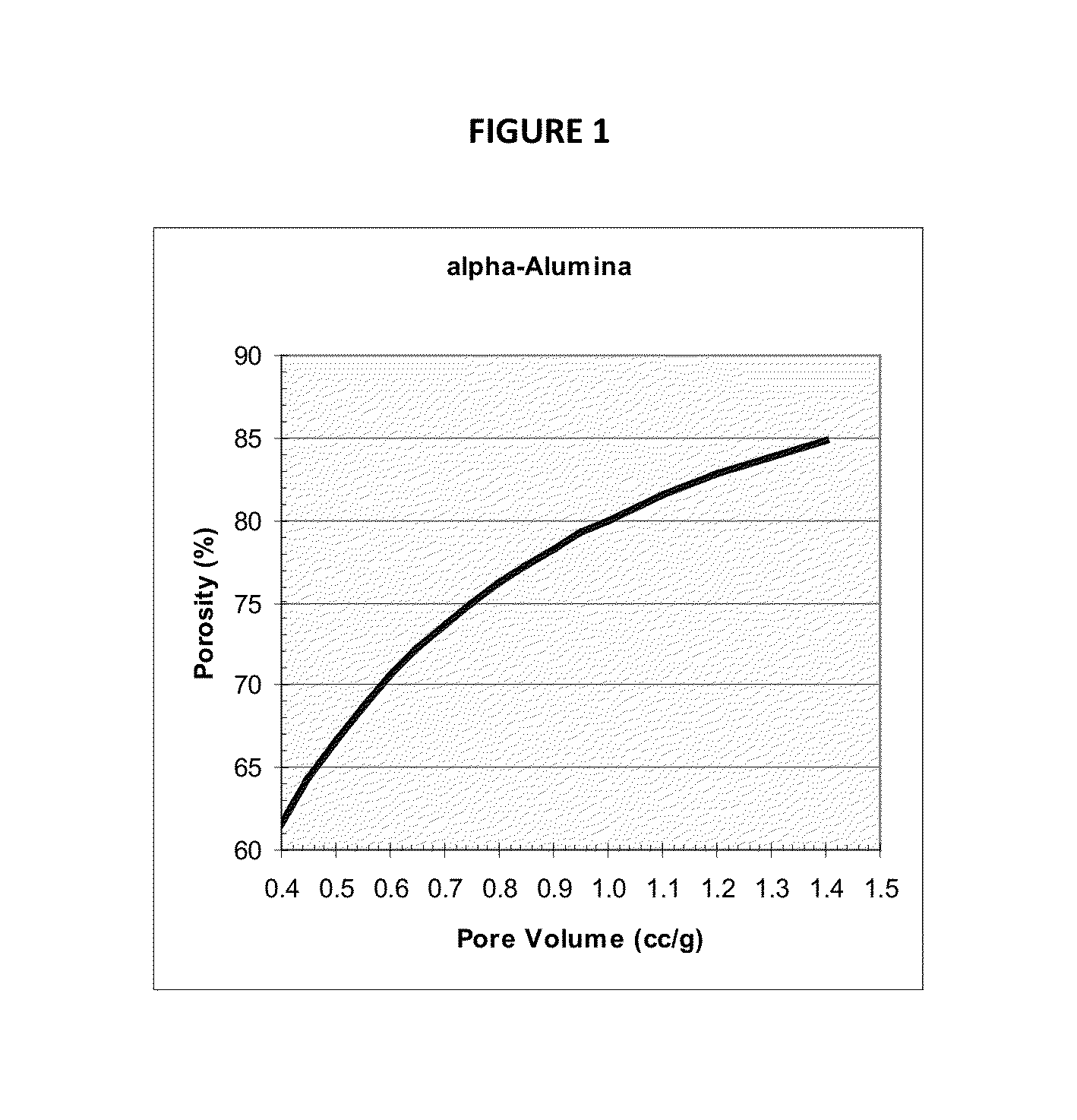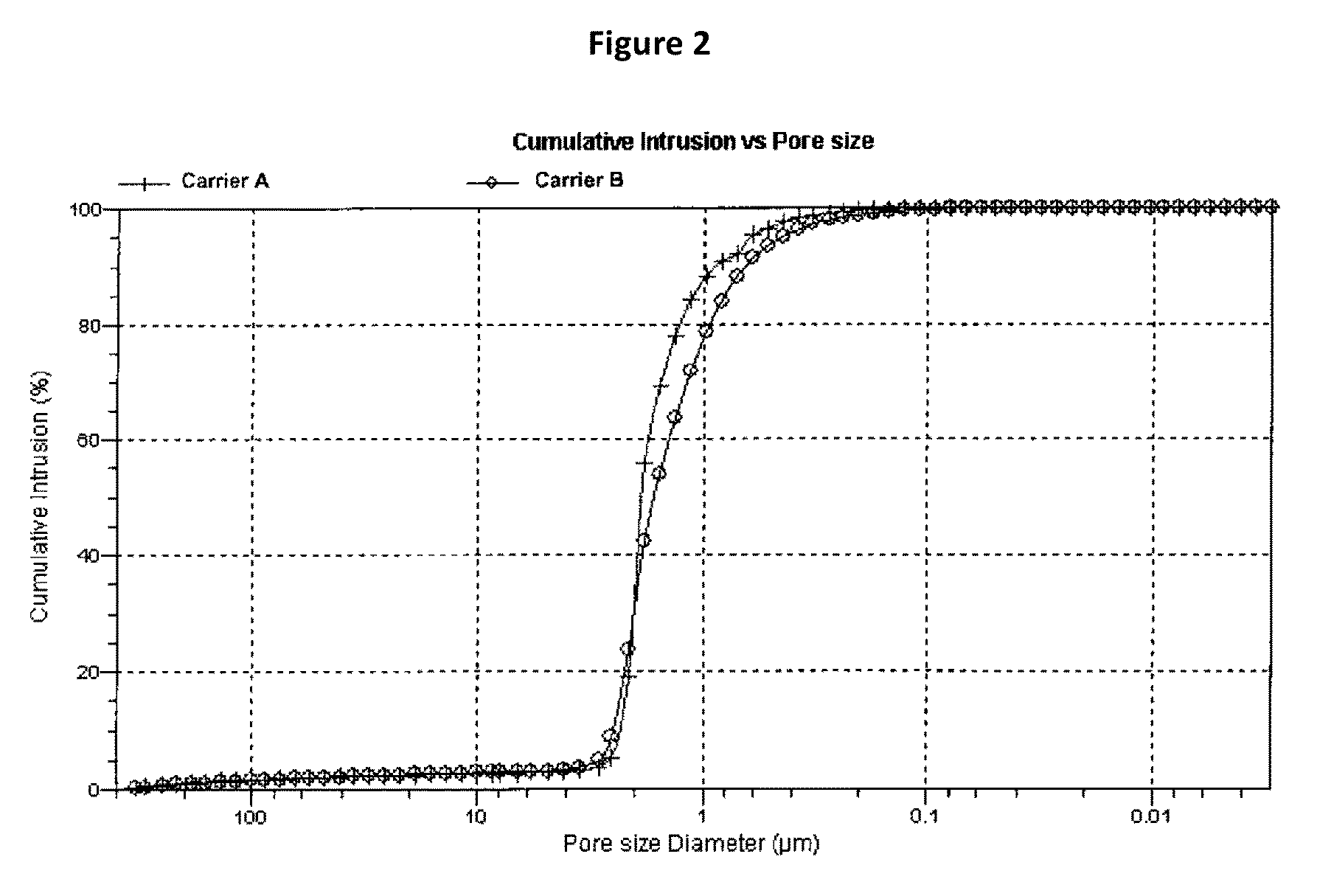Rhenium-promoted epoxidation catalysts and methods of making and using them
a technology of epoxidation catalyst and rhenium-promoted epoxidation, which is applied in the field of rhenium-promoted epoxidation catalysts, can solve the problems of preparing shaped bodies where each desired property is maximized and the shaped porous bodies developed to date have not provided the full spectrum of desired properties for these materials, so as to achieve enhanced surface area, enhanced surface area, and optimized pore size distribution
- Summary
- Abstract
- Description
- Claims
- Application Information
AI Technical Summary
Benefits of technology
Problems solved by technology
Method used
Image
Examples
example 1
Preparation of Shaped Porous Bodies
[0079]Two shaped porous body samples were prepared according to the following procedures:
[0080]Carrier A (Inventive)
[0081]Carrier A is a platelet morphology alpha-alumina shaped porous body according to the present invention. A dry mixture of about 90% a combination of a pseudoboehmite having a higher bulk density and a pseudoboehmite having a lower bulk density and about 10% gamma-alumina powder is prepared and 5.0% formic acid and 4.6% ammonium bifluoride, expressed as percentages by weight of the starting dry mixture are added as aqueous solutions with sufficient water to form an extrudable blend. After mixing, the blend is extruded, dried and fired at temperatures of from about 1000-1400° C. to effect complete conversion of the alumina components to alpha-alumina. The properties of Carrier A are shown in Table 1.
[0082]
TABLE 1Surface area1.34 m2 / gPore volume0.77 mL / gMedian pore diameter2.0 micronPacking density51.9 g / 100 cm3Flat plate crush stre...
example 2
Preparation of Catalysts Based Upon the Shaped Porous Bodies of Example 1
[0087]Ethylene epoxidation catalysts having the same target promoter concentrations are prepared based upon carriers A and B according to the following procedures:
[0088]Catalyst A-1 (Inventive)
[0089]A first impregnation of carrier A (60.39 g) is performed using roughly 140 mL of silver-amine-oxalate solution prepared as described under “Catalyst Preparation” in US 2009 / 177000 A1 (25.89 wt % Ag), incorporated by reference herein in its entirety for any and all purposes. The carrier is impregnated in an appropriately sized glass vessel which is equipped with stopcocks for impregnating the carrier under vacuum. A separatory funnel which is used for containing the impregnating solution is inserted through a rubber stopper into the top of the impregnating vessel. The impregnating vessel containing the carrier is evacuated to approximately 1-2″ (25-50 mm) mercury absolute for 15 minutes, after which the impregnating ...
example 3
Use of Catalysts Prepared in Example 2 in an Epoxidation Reaction
[0098]Catalyst A-1 and catalyst B-1 are tested in standard back-mixed autoclaves with gas recycle (similar to well-known, back-mixed, bottom-agitated “Magnedrive” autoclaves described in FIG. 2 of J. M Berty, “Reactor for vapor Phase-Catalytic Studies”Chemical Engineering Progress, Vol. 70, No. 5, pages 78-84 (1974)). The feed compositions are: 30 mole-% ethylene, 8 mole-% oxygen, 3.0 mole-% carbon dioxide, 0.5 mole-% ethane and various ppmv levels of ethyl chloride. The volume of each catalyst charge is 0 cm3. Flow rates are about 640 liter / hour. System pressures are about 1900 KPa-gauge. The standard deviation of a single test result reporting catalyst activity in accordance with the procedures described herein is about 1.2° C. The standard deviation, of course, will depend upon the quality of the equipment and precision of the techniques used in conducting the tests, and thus will vary. These standard deviations are...
PUM
| Property | Measurement | Unit |
|---|---|---|
| diameters | aaaaa | aaaaa |
| diameters | aaaaa | aaaaa |
| diameters | aaaaa | aaaaa |
Abstract
Description
Claims
Application Information
 Login to View More
Login to View More - R&D
- Intellectual Property
- Life Sciences
- Materials
- Tech Scout
- Unparalleled Data Quality
- Higher Quality Content
- 60% Fewer Hallucinations
Browse by: Latest US Patents, China's latest patents, Technical Efficacy Thesaurus, Application Domain, Technology Topic, Popular Technical Reports.
© 2025 PatSnap. All rights reserved.Legal|Privacy policy|Modern Slavery Act Transparency Statement|Sitemap|About US| Contact US: help@patsnap.com



